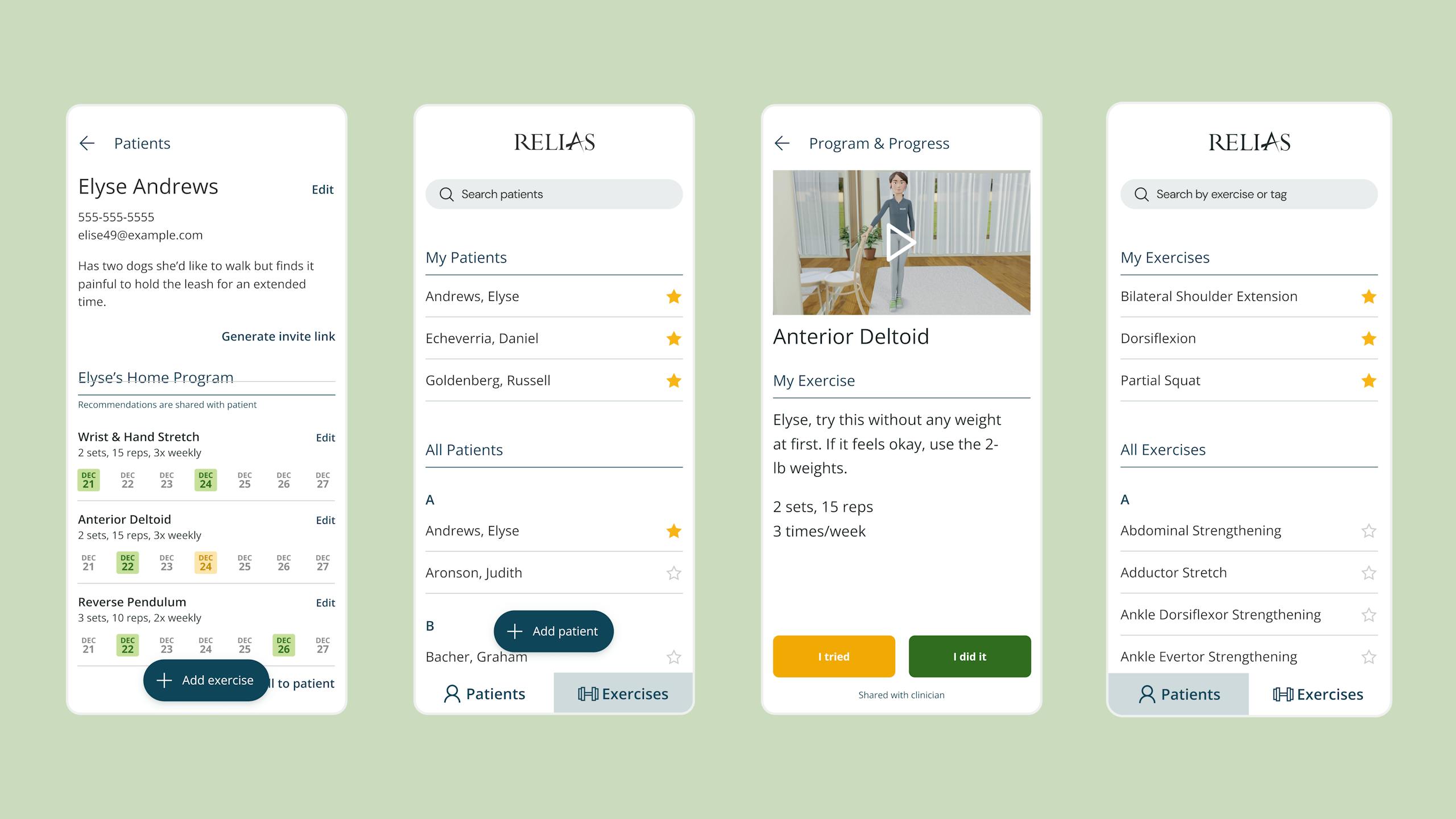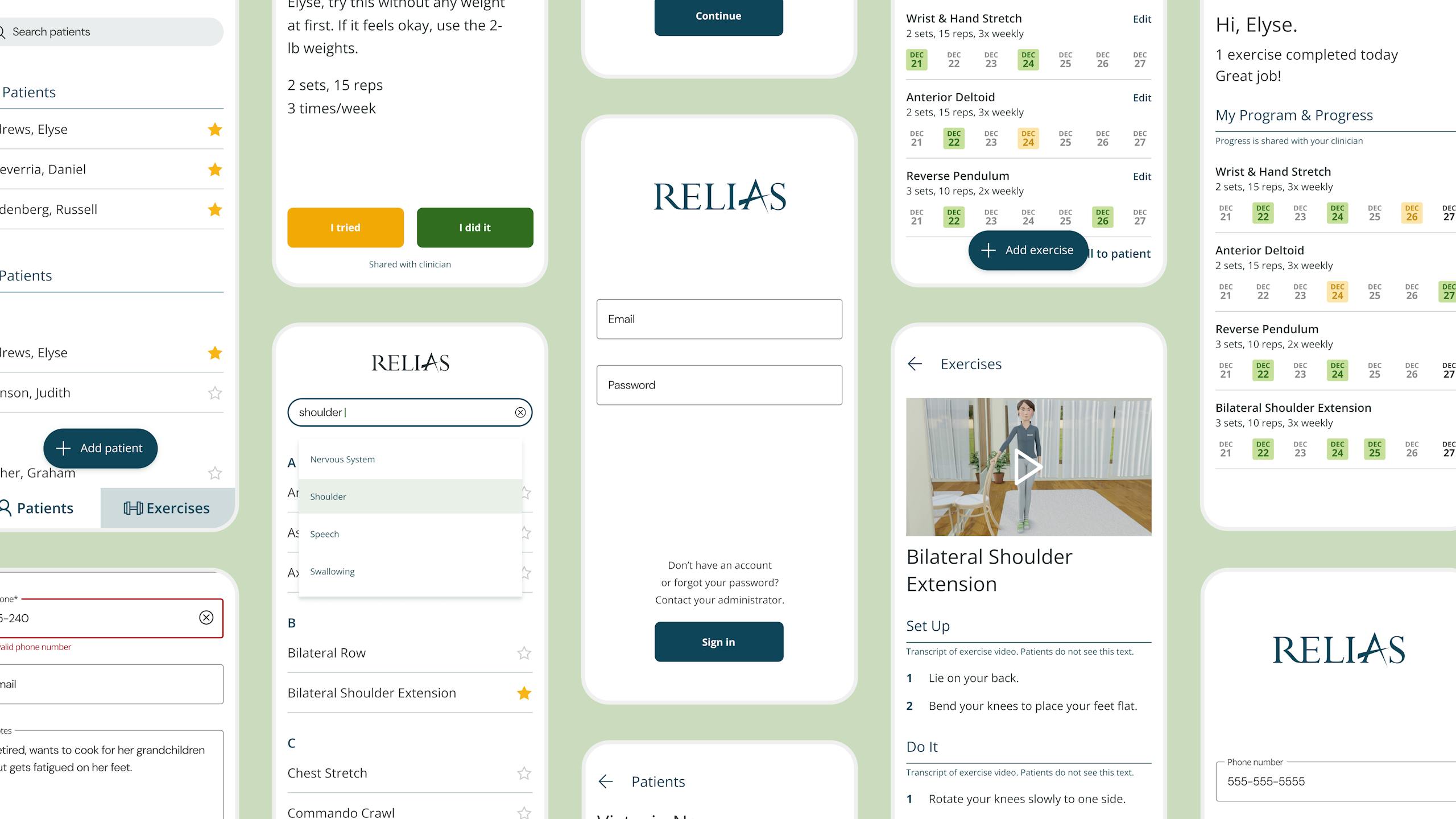Relias
Validating a market and accelerating patient care

Challenge
Validate product assumptions, design and build two separate apps

Outcome
Two separate apps, an agile engineering team, and positive user feedback

About Relias
Relias develops online healthcare education content to help healthcare providers deliver the best care to their patients.
They educate providers in many verticals including post-acute care, acute care, health and human services, and rehabilitation therapy. They help healthcare organizations their staff and those under their care get better: get better at identifying issues, get better at addressing them, and get better outcomes for all.
The Challenge
Relias Identified a Need in Post-Acute Care
Recently, the Relias team assessed all of the changes that were happening within the physical therapy space, and they realized that there were some gaps in their offering.
Relias wanted to design a product for patients receiving therapy in post-acute care settings. There’s a lot of technology out there in the physical therapy space, but no one is focused on post-acute care. This audience is typically the older population and represents more than 50% of the market.

The Solution
thoughtbot validated the problem, disproved assumptions, and started rapidly prototyping
In order to address this gap, Relias reached out to thoughtbot to validate the problem statement. The Relias team had already done a good amount of formative work, so the thoughtbot team condensed a traditional 5-day Product Design sprint into a 1-day
mini-sprint.
Two main assumptions had to be disproved before they built the app - does this market want an app and would they use it?
To validate this, the thoughtbot team started rapid prototyping and completing user interviews. This was a very important step which impressed Tiffany Shubert at Relias.
The research thoughtbot conducted completely disproved the assumption that older patients would not use an app. The post-acute market actually wanted access to their physical therapy exercises in real time.
The research also showed that physical therapists wanted to encourage patients to do their prescribed exercises, so Relias and thoughtbot decided to create two apps, one for patients to access exercises and one for physical therapists to prescribe them.
It was such a collegial group of people. Everyone was so easy to work with, the trust, confidence and expertise right from the beginning. From the very first meeting that was established, it was extremely helpful - thoughbotters were great at distilling down everything. Within an hour, we were like “yes that’s exactly what we want to do."
The Outcome
Mobile App strategy backed by a robust user understanding
Once we had a strong sense of our target customer’s need and the designs were finalized and validated, the teams worked together to build two distinct iOS and Android apps. The first app allows therapists to prescribe exercises and the second allows patients to access them. thoughtbot created the frontend of both apps, and the Relias in-house team built the backends.
During this time, Relias was in an engineering transition to a more agile product delivery workflow. thoughtbot helped model best practices through close interaction with the Relias team. These best practices were then reflected within other teams at Relias. The successful end result validated the new agile processes.
At the end of our engagement, everyone on the project was extremely satisfied with what we built together. Both the physical therapists and the patients love the apps and find them simple, clean, and easy to use. The technology adoption rate amongst the target age group has increased rapidly with this app, proving that there is no barrier here and that technology is accelerating patient care.

